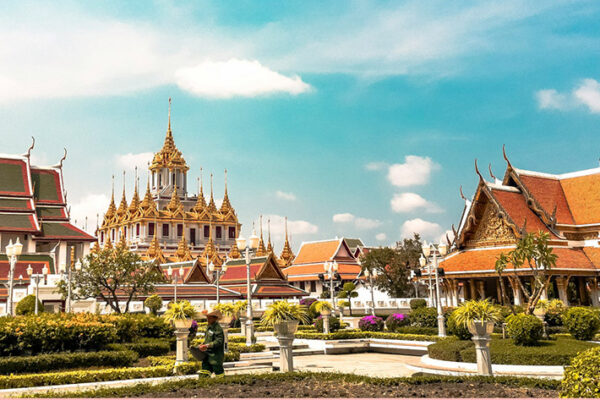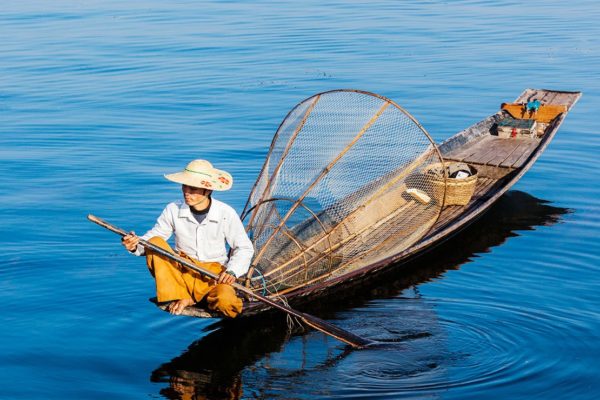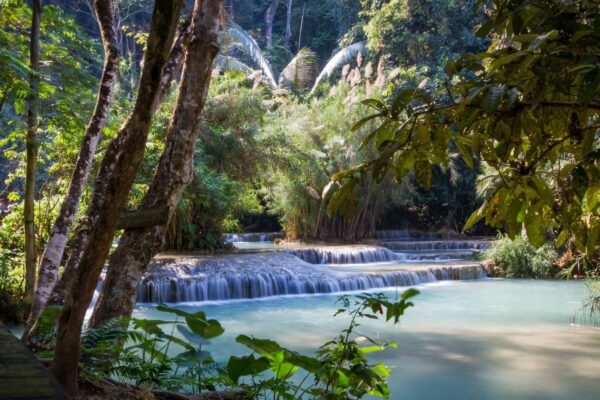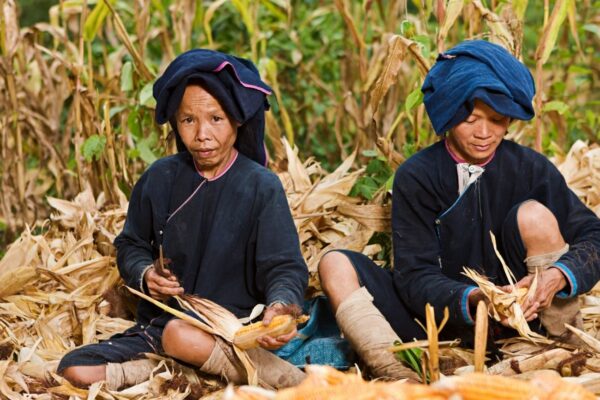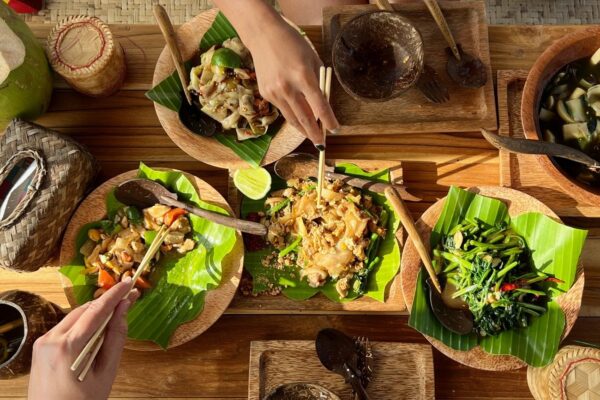Surprising Facts About Laos Culture For Curious Travelers
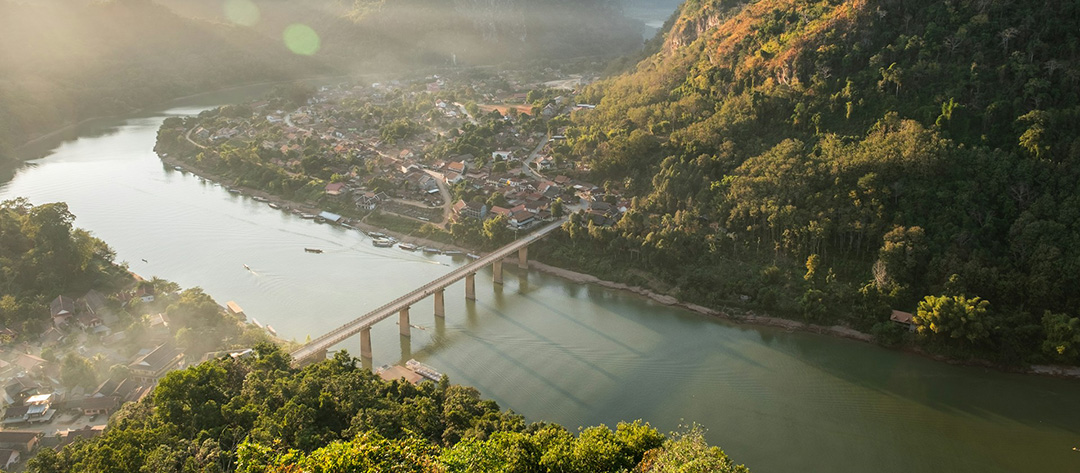
Step quietly into the landlocked heart of Southeast Asia, Laos, where morning mists dance across the Mekong and temple bells echo like whispers from the past. This article delves into the unique facts about Laos culture, revealing a rich tapestry of beliefs, traditions, and customs that have shaped this Southeast Asian nation.
10 Facts About Laos Culture That Will Surprise You
Fact 1: The Land of a Million Elephants… And a Billion Grains of Sticky Rice
While the historical name of Laos, Lan Xang (“Land of a Million Elephants”), remains a symbol of its regal past, it could metaphorically be reimagined today as the “Land of a Million Baskets of Sticky Rice.” Sticky rice (khao niew or khao niao), often called “the king of Lao cuisine,” is both a dietary staple and a cornerstone of cultural identity. Laotians consume this grain in unparalleled quantities, with it appearing at every meal. The rice is prepared by soaking and steaming it in a bamboo basket (HUAD) and eaten by hand, rolled into small balls for dipping into spicy or savory dishes.
The bond between sticky rice and Lao society is profound. While the greeting “kin khao leo bor?” (“Have you eaten rice yet?”) is not explicitly documented in sources, references to rice as a cultural anchor are well-founded: communal meals and shared baskets reinforce familial and social ties. The act of preparing sticky rice, often taught through generations, reflects its centrality to heritage. For those seeking to understand Lao culture, sticky rice serves as both nourishment and a living tradition tied to the land and national pride.
>> Read More: Where To Visit In Laos For First-time Travelers?
Fact 2: The Baci Ceremony – A Spiritual Practice of Balance and Blessing
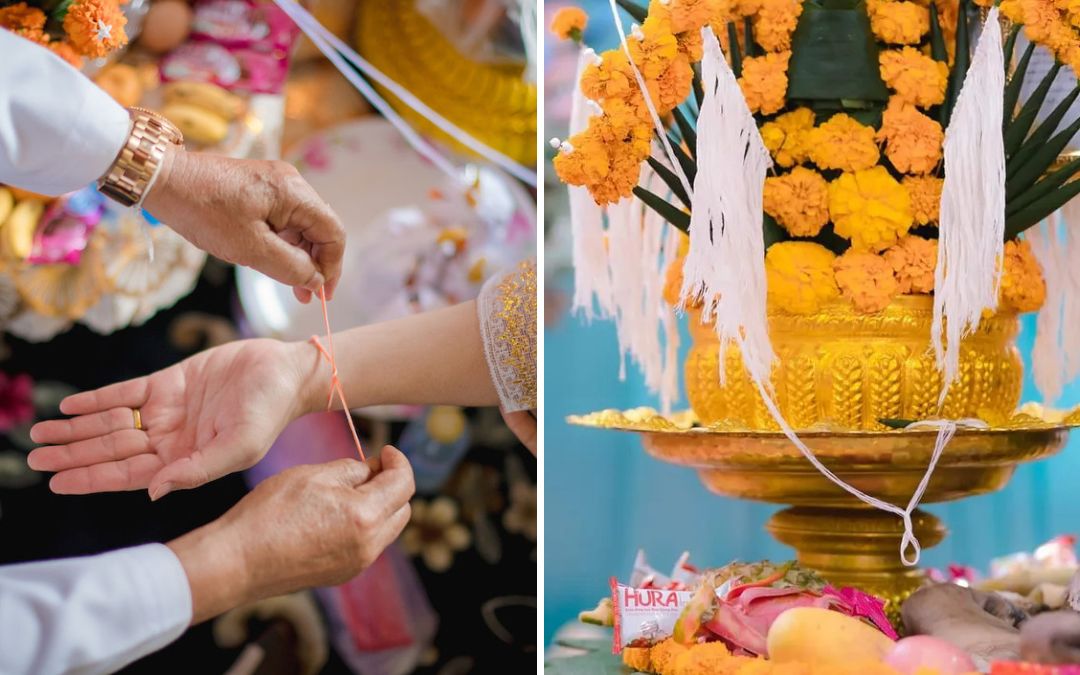
(Source: Internet)
One of Laos’ most enduring animist traditions, the Baci ceremony (also known as Sou Khuan) predates Buddhism and remains deeply ingrained in the country’s spiritual fabric. Rooted in the belief that the human body houses 32 protective spirits (kwan), this ritual aims to restore balance when these energies become disrupted due to life changes, illness, or trauma.
Key Elements
- Purpose: Celebrated during joyous occasions (births, weddings, New Year) and times of hardship (illness, funerals), the Baci honors transitions, heals emotional wounds, and renews spiritual bonds.
- Ritual Process: A respected elder or former monk leads chants to call wandering kwan back to the body. White cotton threads (pha kwan) are tied around the wrists to symbolize the “re-attachment” of these spirits.
- After the Ceremony: Participants typically keep the strings for three days before carefully unraveling them, as cutting them is discouraged.
Cultural Significance
The Baci bridges individual and communal well-being, offering blessings of health, prosperity, and harmony. It reflects Laos’ syncretic spirituality, blending animist traditions with Buddhist-influenced practices.
Fact 3: A Mosaic of Peoples – Over 160 Ethnic Groups
To speak of a single “Lao culture” is to oversimplify a vibrant tapestry of identities. Laos is one of Southeast Asia’s most ethnically diverse nations, with the government officially recognizing 50 ethnic groups (including over 160 subgroups) divided into four ethno-linguistic families:
- Lao-Tai (e.g., Lao, Tai, Phutai) – predominantly lowland Buddhists.
- Mon-Khmer (e.g., Khmu, Katang) – animist traditions.
- Hmong-Iu Mien (e.g., Hmong, Yao) – hill-based groups with distinctive textiles.
- Chine-Tibetan (e.g., Akha, Kui) – highland communities.
Historically categorized by altitude (Lao Loum, Lao Theung, Lao Soung), these groups now share four broader linguistic and cultural frameworks. From the Hmong’s embroidered pa ndau (story cloths) to the Khmu’s animist rituals, Laos’ diversity enriches its national identity.
Fact 4: The Pha Bang – A Symbol of Sovereignty and Spiritual Legacy

Sunset over the Mekong River in Luang Prabang (Source: Internet)
The city of Luang Prabang, a UNESCO World Heritage site, derives its name from the Pha Bang (ພະບາງ), a golden Buddha statue revered as Laos’ palladium of sovereignty. Standing at 83 centimeters, this iconic image embodies national identity and the legitimacy of Laos’ rulers.
Origins & Symbolism
- Legend and Craft: Though traditionally believed to have been cast in Sri Lanka (Ceylon) between the 1st and 9th centuries, scholars debate its origins, noting stylistic similarities to Khmer art from a later era. The statue was gifted to Zoymouvong, the King of Muang Sua, and arrived in Luang Prabang in 1359, solidifying its role as a spiritual and political cornerstone.
- Material: Crafted from thong (a bronze-gold-silver alloy) and covered in gold leaf, the Pha Bang depicts the Buddha in the Double Abhaya mudra (dispelling fear).
Historical Pilgrimage
The statue’s journey reflects Laos’ turbulent past:
- Captured by the Siamese: In 1778, Thai forces seized it and transported it to Bangkok; it returned to Luang Prabang in 1782.
- Later Conflicts: It was briefly taken to Vientiane in 1705 and again relocated to Bangkok in 1828, only to return to Luang Prabang in 1867.
Cultural & Spiritual Significance
Today, the Pha Bang resides in the Royal Palace Museum. During Pi Mai (Lao New Year), it is transported to Wat Mai for a sacred bathing ritual, where devotees wash the statue with holy water. This ceremony underscores the Pha Bang’s enduring role as a bridge between monastic tradition, royal authority, and national pride.
>> Read More: Laos Travel Requirements Explained – Entry, Visas & Safety Tips
Fact 5: The Art of the Sinh: More Than Just a Skirt
The sinh—a tubular skirt that drapes elegantly around the body—is more than mere attire in Laos. It serves as a dynamic canvas of cultural identity, with patterns and motifs that encode regional origins, ethnic affiliations, and marital status. Traditional weaving techniques, passed through generations of women, transform silk, cotton, and even synthetic materials into intricate narratives.
Symbolism With Mythical Motifs
- Naga Serpents: These serpent-like beings, believed to inhabit the Mekong, symbolize protection and spiritual connection.
- Lotus Flowers: Represent purity and enlightenment, reflecting Buddhism’s influence.
- Elephants & Pha Sin Bands: The pha sin (decorative bottom band) often depicts scenes from daily life or blessings, while elephants signify strength.
Regional & Ethnic Identity
Designs vary by ethnic group and region. For example, northern Lao patterns differ from southern ones, highlighting Laos’ diverse heritage.
Weaving Traditions & Modernity
Handloom weaving remains a revered skill, especially in rural villages, where the rhythmic sounds of the shuttle echo through homes. While silk and cotton are traditional materials, modern stitches may incorporate synthetic fabrics for durability. This evolution acknowledges shifting lifestyles while preserving the essence of the craft.
Cultural Context
The sinh embodies Laos’ spiritual duality: animism (nature reverence) and Buddhism coexist in its motifs. During festivals or weddings, women pair it with traditional blouses, reflecting pride in their heritage. Today, urban women may wear it less frequently, often opting for Western attire, but its significance endures.
Fact 6: A Land of Festivals – Celebrating Life, Rice, and Cosmic Balance
Laos’ vibrant festival calendar, governed by the Buddhist lunar cycle, weaves spirituality, agriculture, and communal joy into its annual boun celebrations. These events mirror the nation’s deep connection to nature, tradition, and shared identity. Here are the key festivals in Laos that you should participate.
Boun Pi Mai (Lao New Year)
- Dates: Mid-April, aligning with the lunar calendar.
- Rituals:
- Purification: Water-throwing, Buddha statue washing, and sand stupa (phakang) construction clean the slate for renewal.
- Temple Visits: Devotees offer alms, and communities host beauty pageants to elect “Miss Boun Pi Mai”.
- Feasting: Families gather to share khao soi (rice broth) and khanom (sticky rice cakes).
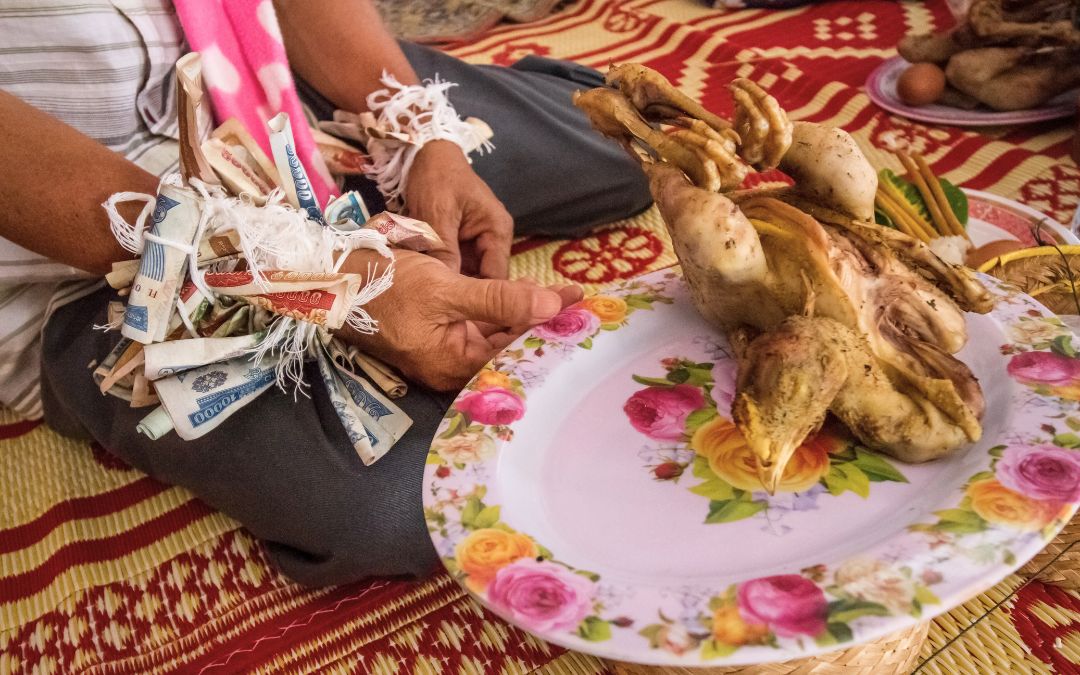
How people celebrate Boun Pi Mai
Boun Bang Fai (Rocket Festival)
- Purpose: Held in May-July (depending on the province), this rain-calling ceremony launches bamboo rockets toward the heavens to awaken fertility bundas.
- Highlights:
- Competitive Launches: Decorated rockets, often topped with incense, compete for reach and creativity.
- Cultural Processions: Parades feature artificial elephants, horses, and cross-dressed dancers performing traditional routines.
- Modern Twist: While rooted in animism, the festival now blends with Buddhist themes, blending ancient and contemporary practices.
>> See Tour: The Very Best Of Laos
Fact 7: The Enduring Legacy of the French
While Laos proudly guards its distinct cultural identity, subtle traces of French colonial influence remain interwoven into its modern fabric. As part of French Indochina for over six decades (1893–1953), this period shaped architectural styles, culinary traditions, and linguistic practices, though infrastructure development remained minimal during colonial rule.
Architecture & Urban Landscapes
In cities like Vientiane and Luang Prabang, French-designed colonial buildings (notably administrative offices) stand alongside traditional Lao wooden homes. Luang Prabang, recognized for its architectural beauty by French administrators, preserves this blend particularly well. However, widespread urban development or road networks were not prioritized during colonial occupation.
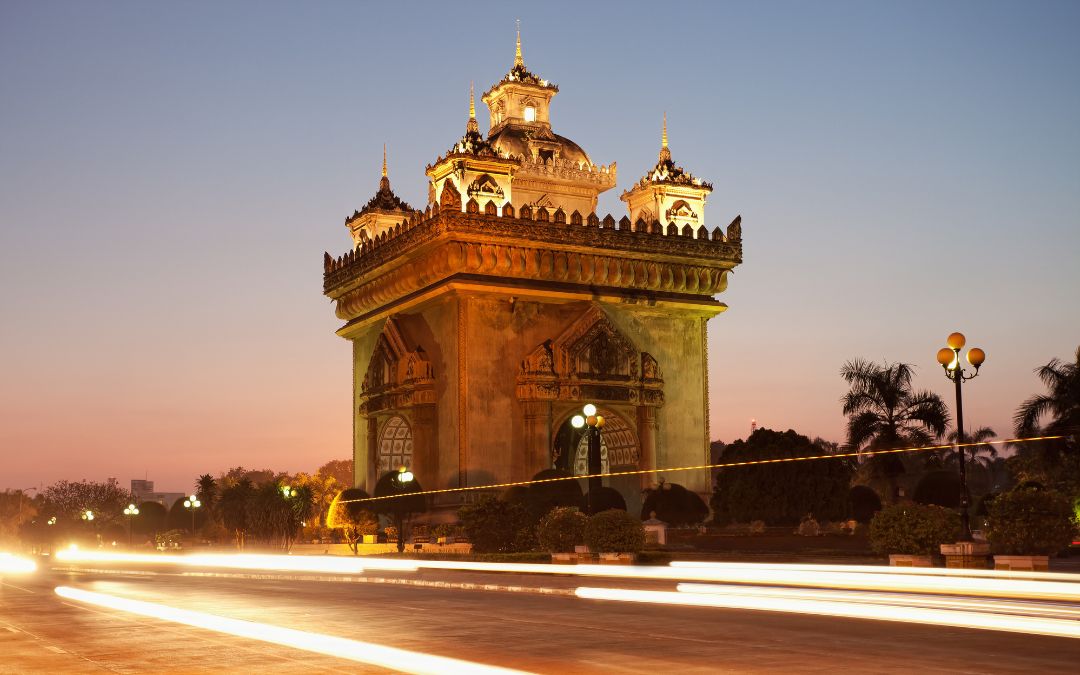
Cuisine & Cultural Exchange
The French introduced baguettes and café culture, which remain part of daily life in urban centers. While Vietnamese migrants dominated colonial administration and commerce, Chinese traders impacted local economies, though these groups’ legacies are less immediately visible than French culinary influences.
Language & Societal Impact
Though French was never widely adopted outside elite circles, limited proficiency persists among older generations educated during colonial or early post-colonial periods. However, the language’s prominence declined sharply after independence in 1953, particularly as English gained relevance in global diplomacy and education.
Fact 8: The Unexploded Ordnance – A Shadow from the Past
Laos is recognized as the most heavily bombed country per capita due to its intense targeting during the Vietnam War and related conflicts. From 1964 to 1973, over 2 million tons of ordnance were dropped on Laos, with approximately 30% remaining unexploded. These bombs, now designated as unexploded ordnance (UXO), continue to threaten communities across the country, with Xiangkhuang Province (a central region) among the most contaminated areas.
The impact is staggering: over 20,000 people—40% of whom were children—have been killed or injured by UXO since the war ended. Annual casualties persist, with reports indicating approximately 200 incidents nationwide and higher rates in densely bombed regions like Xiengkhuang.
Efforts to address this legacy include NGO-led demining programs, such as those conducted by Mines Advisory Group (MAG) and the Lao Unexploded Ordnance Programme (UXO Lao), which focus on land clearance and community education about UXO risks.
Fact 9: The Quiet Dignity of the Monks’ Alms-Giving Ceremony
Tak Bat, the daily alms-giving ceremony, is a profoundly sacred ritual in Laos, particularly in the UNESCO World Heritage city of Luang Prabang. Not a tourist performance but a spiritually vital act, this ritual sustains the monastic community and allows laypeople to earn merit within Theravada Buddhism.
Key Details:
- Timing: Occurs daily between 5:30–6:30 AM (summer) and 6:00–7:00 AM (winter). Monks depart temples in silent, ordered processions, led by senior monks and followed by novices as young as six.
- Process: Barefoot monks in saffron robes use alms bowls (patta) to receive sticky rice, fruits, and biscuits from kneeling devotees, who seek spiritual merit through generosity. The exchange includes brief prayers and blessings.
- Cultural Significance: While iconic in Luang Prabang, Tak Bat occurs globally in Theravada Buddhist communities but is most renowned here due to the high concentration of monasteries.
Respectful Participation
Tourists must prioritize reverence over documentation. Guidelines include:
- Dress modestly (cover shoulders, avoid shorts).
- Maintain a respectful distance (no flash photography, physical contact, or disruptive behaviors).
- Avoid purchasing offerings from vendors, as this disrupts the authentic spiritual exchange between locals and monks.
Local authorities advise witnessing Tak Bat in less crowded areas or alongside trained guides to minimize disruption to the ritual’s sacred intent.
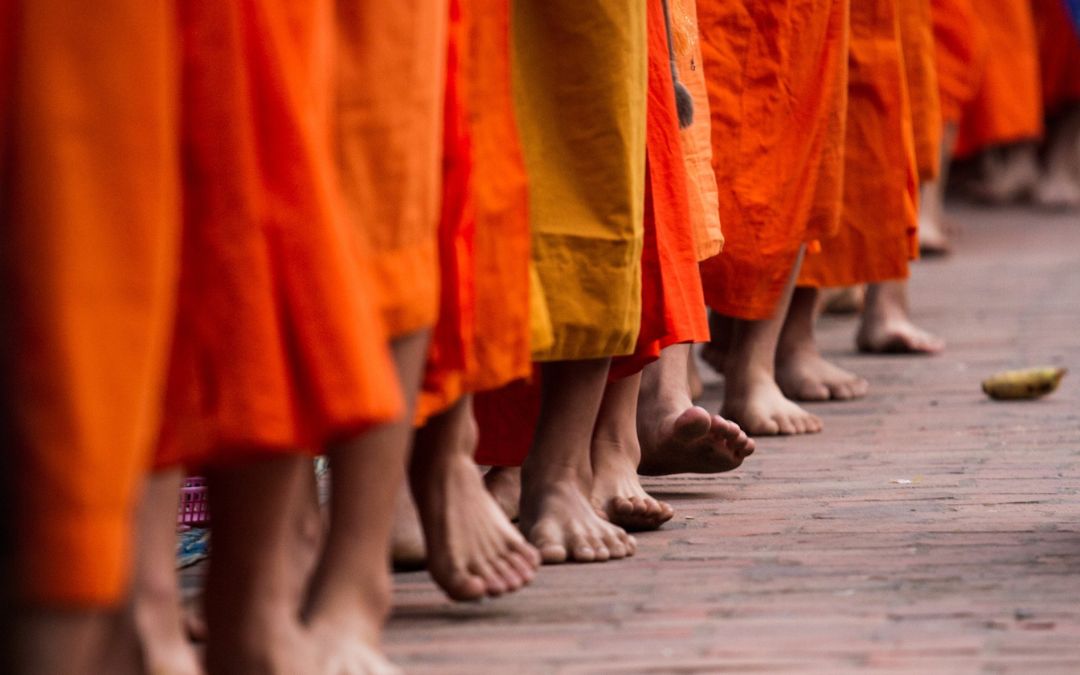
The serenity of the Alms-Giving ceremony in Luang Prabang
Fact 10: A Culture of Muan – Finding Joy in Simplicity
The Lao concept of muan (ມົວນ) encapsulates a philosophy of joy, contentment, and a relaxed approach to life. While often translated as “enjoyable” or “to have fun,” its meaning extends to a state of being — a mindfulness of the present moment, prioritizing social harmony and simple pleasures over material wealth.
Key Attributes of Muan:
- Communal Focus: Central to muan is shared joy, whether through shared meals with family and friends or festive celebrations like Pi Mai (Lao New Year) or Boun Bung Fai (rocket festival).
- Playful Spirit: In Buddhist ceremonies, muan manifests as light-hearted teasing between men and women, blending solemnity with humor.
- Present-Moment Mindfulness: Emphasizing happiness in simplicity, muan encourages observers to savor moments — like lingering by the Mekong River — rather than rush through life.
Contrast with Neighboring Cultures
The Lao proverb “Lao and Viet, like cat and dog” reflects this cultural distinction: While the Vietnamese focus on productivity and the Chinese on discipline, Lao people prioritize ease and social connection.
Another saying humorously contrasts work ethics: “The Vietnamese plant the rice, the Cambodians watch it grow, the Lao listen to it grow”.
Experiencing Muan Today
Visitors often encounter muan in:
- Local Festivals: Participating in Boun Khao Phansa (Buddhist Lent) or Boun That Luang (festival of the blazing statue) alongside communities.
- Daily Life: Observing muan in spontaneous laughter, leisurely beer lao sessions, or family-led baci ceremonies.
While global pressures may nudge Laos toward modernity, muan remains a cultural anchor, reminding travelers to embrace life’s beauty in its most unassuming forms.
>> See Tour: Classic Laos
Final Thoughts
The rich tapestry of Laotian life is woven with threads of ancient spirituality, diverse ethnic traditions, and a profound connection to nature and community. These ten facts about Laos culture offer just a glimpse into the soul of this enchanting nation, a soul that is at once serene, resilient, and full of a quiet joy.
But reading about Laos is one thing—experiencing it is another.
At Asia Pioneer Travel, we believe travel should open your heart, not just your passport. Our tailor-made journeys through Laos are crafted with cultural authenticity, local connection, and unforgettable moments at their core. Whether you’re seeking a spiritual retreat in Luang Prabang or a deep dive into rural village life, we’ll help you design a trip that goes far beyond the ordinary. Plan your cultural journey with Asia Pioneer Travel today.
